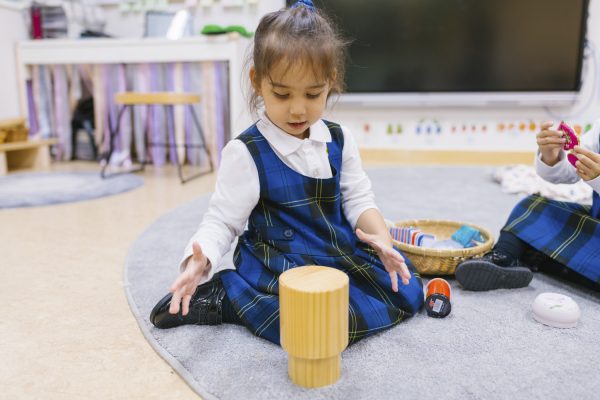
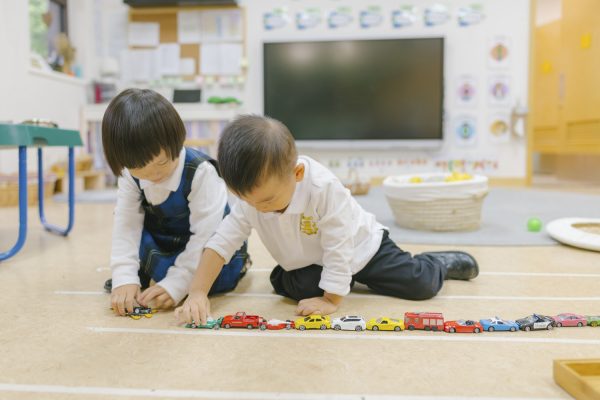
Sometimes, younger children like to line up toy cars, wrap things with thread or put them into a stroller while they are playing. To adults, such behaviours may seem a strange or inconsequential, but for children aged 2-3 years old it is an essential process for learning about themselves and the world around them. It is what we call 'schematic play', which is a regular and repetitive behaviour exhibited by children of this age.
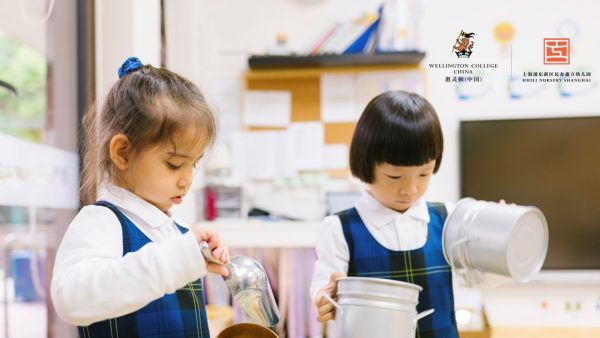
Some children engage in a trajectory type of schematic play. They like to create paths of movement by climbing up and jumping down. Some children like to engage in a schematic play known as transporting.
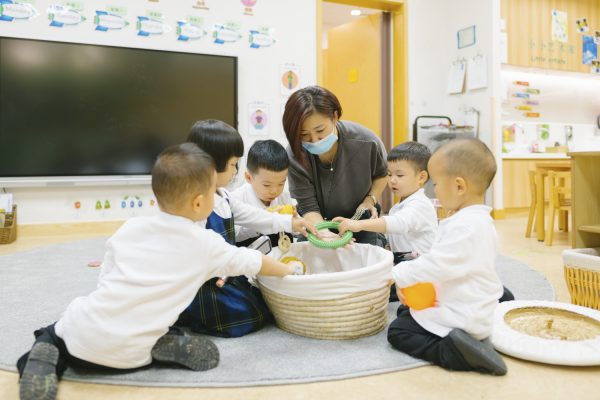
They will move items from one place to another, carrying them in their hands, pockets or other containers. Some children show an interest in enclosed spaces. They build fences and barricades to enclose themselves or other items. We call this type of schematic play enclosing. Our teachers will first conduct in-depth observations to identify children’s interests and schematic behaviours. From that foundation, the teachers will design a supportive and challenging environment to stimulate children to explore the things they are interested in and develop a deeper understanding of how their interests sit within the world around them.
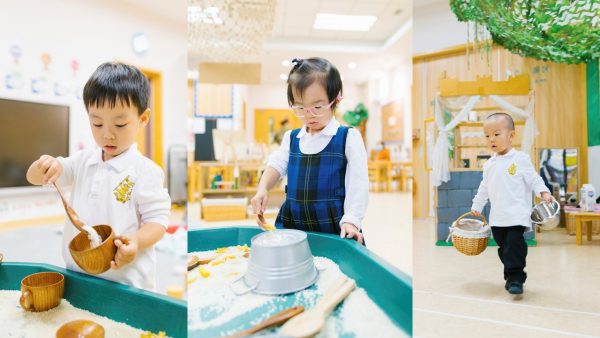
Children at this age actively engage in heuristic play. Heuristic play works well to support schematic play. For example, how do children behave when we provide them with some jars, beans, spoons, and a few pieces of yarn? Some may put the beans in a jar and shake it to listen to the noise it makes. Some may wrap the beans in a scarf or line them up. Others may just build a wall of jars and bang on them with a spoon. Here, we have the opportunity to support our pupils as they interact with sounds, learn how to open lids, exercise their hand muscles and even expand their vocabulary. The process of schematic play is incredibly fascinating and our immersive bilingual environment provides ample opportunities for children to discover and reflect, to experience difference in their lives, and to confidently share with their peers in order to take their learning into their own hands.
